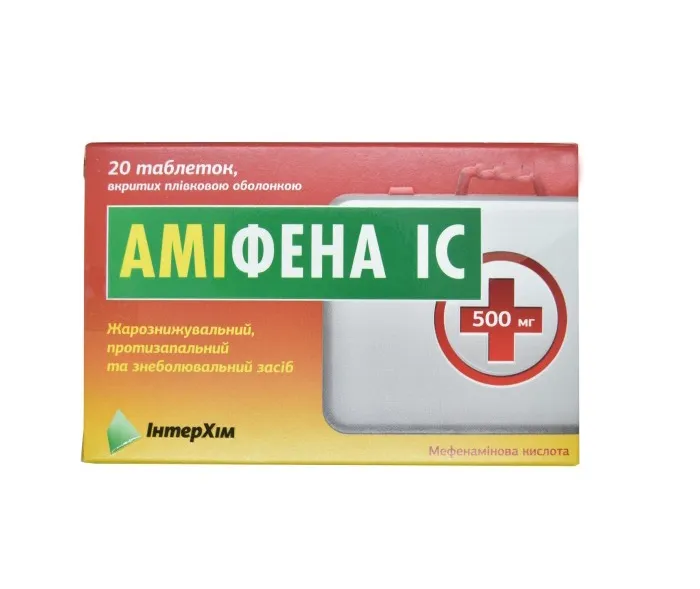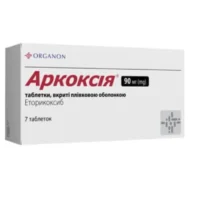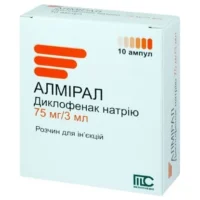Description
Amifena (Mefenamic Acid) Coated Tablets 500 mg. №20
Ingredients:
Each coated tablet contains 500 mg of mefenamic acid.
Mechanism of Action:
Mefenamic acid acts as a nonsteroidal anti-inflammatory drug (NSAID) by inhibiting prostaglandin synthesis. Prostaglandins are lipid compounds involved in the inflammatory process, and by blocking their production, mefenamic acid helps reduce pain and swelling.
Pharmacological Properties:
Amifena tablets contain mefenamic acid, a potent NSAID with analgesic and anti-inflammatory properties. It is rapidly absorbed after oral administration, reaching peak plasma concentrations within hours.
Indications for Use:
Amifena tablets are indicated for the relief of mild to moderate pain, including menstrual pain. They are effective in alleviating symptoms associated with various conditions that cause pain and inflammation.
Contraindications:
Avoid using Amifena if you have a history of allergic reactions to mefenamic acid or other NSAIDs. Patients with a known hypersensitivity to these substances should not take Amifena tablets.
Side Effects:
Common side effects of Amifena may include gastrointestinal irritation, ulcers, and allergic reactions. If you experience any adverse effects, discontinue use and seek medical advice promptly.
Usage Instructions:
The usual dosage is one tablet every 6 hours as needed for pain relief. Swallow the tablet whole with a full glass of water. Do not crush or chew the tablet to ensure proper absorption.
Benefits Compared to Analogues:
Amifena offers superior pain relief compared to other NSAIDs due to its potent anti-inflammatory effects. Its rapid onset of action and prolonged duration make it a preferred choice for managing various types of pain.
Suitable Patient Groups:
Amifena is suitable for use in adults, including the elderly, for the management of mild to moderate pain. It is not recommended for children without medical supervision.
Storage Conditions and Shelf Life:
Store Amifena tablets in a cool, dry place away from direct sunlight. Check the expiration date on the packaging and do not use the product beyond the stated shelf life.
Packaging Description:
Each package of Amifena contains 20 coated tablets, with each tablet individually sealed for protection. The packaging is designed to maintain the quality and integrity of the tablets.
Scientific Evidence:
Studies have shown the efficacy of mefenamic acid in treating menstrual pain, with significant improvements in pain scores and quality of life measures compared to placebo. Research published in the Journal of Clinical Pharmacology supports the use of mefenamic acid for pain relief.
Additional Information:
It is crucial to adhere to the recommended dosage of Amifena to minimize the risk of side effects. If you encounter any adverse reactions or have concerns about the medication, consult your healthcare provider promptly. Inform your doctor about any existing medical conditions or medications to prevent potential drug interactions.





